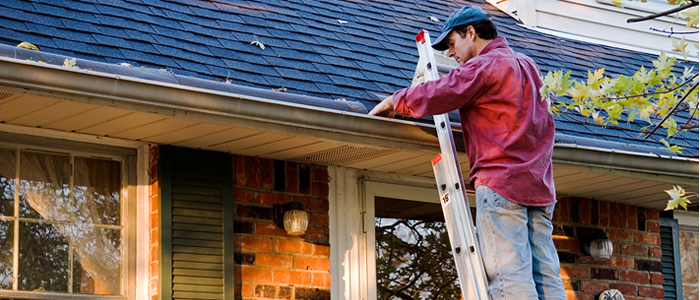
Springtime is here, change is in the air — in more ways than one. One change to which we need to be particularly attentive is the change in weather. As the climate warms, we need to be aware of the impact these shifts can have on our homes.
A home buyers’ handbook assembled by USDA Rural Development recommends the following general tips in preparing your home for warmer weather:
8 things every homeowner should do, every spring
1. Check exterior of house for cracked or peeling paint
2. Check the roof for any loose or broken shingles
3. Clean gutters
4. Change furnace filter
5. Check basement for wet spots or cracks in foundation
6. Open foundation vents
7. Service any window air-conditioning units and replace filters
8. Pump your private septic system every two to five years (if applicable)
Flooding from storms and snowmelt is one of the biggest weather risks in the spring. Hanover has created a checklist of preventative maintenance measures you can take.
The Federal Emergency Management Association (FEMA) also advises taking the following preparatory measures:
- Make a plan for your family to contact one another in the event of a flood or other emergency, including sharing contact information and a designated safe meeting place.
- Get an emergency kit that can sustain you and your family for up to three days. This should include keeping important documents in a sealed, airtight container.
- Understand how much your home is at risk for flooding. FloodSmart.gov has several tools that can help you assess the risk and the potential financial impact.
- Make sure your home is insured against flood damage. While most homeowner policies do not cover damage due to flooding, the federal government’s National Flood Insurance Program can help you protect your home. If you have concerns about flood insurance, call us to help lead you in the right direction for getting the the right protection.
Researchers from the University of Minnesota have identified multiple causes of flooding and measures we can take to help counter them:
- Sub-surface water leaks, when water levels rise and enter your home via cracks or openings in foundations, basement slabs, or sumps and foundation drainage systems.“You can prepare for this type of basement flooding by raising the furnace, water heater, appliances and storage items an adequate distance above the floor using waterproof blocking.”
- Sewer backups, which can occur even if the flooding is far from your home.“Consider having a valve or one-way check valve installed where the sewer main leaves the house.”
- Spring run-off and minor surface flooding.“Check the ejection pipe, sump and sump pump to be sure that they are functioning properly. If prolonged flooding or a power outage is possible, consider having a spare sump pump and a gas-powered electric generator available.”
- Major surface flooding, caused by streams and rivers overflowing their banks.“If the home is outside areas protected by dikes, and the foundation has been strengthened or braced and sealed sufficiently to withstand the external water pressure, it may be possible to keep the basement dry using gas-powered pumps. If the basement has not been reinforced and is incapable of withstanding the force of floodwaters, allowing the basement to fill with water may protect the foundation from structural damage by keeping the pressure similar on both sides of the foundation walls and floor.”
You can learn more from FEMA about the flood risk posed by snowmelt and spring thaw.
The Centers for Disease Control and Prevention has a list of items you should have on hand in the event that inclement spring weather disrupts your life, including battery-operated flashlights and radios, an emergency kit and evacuation plan, lists of important personal information, a first aid kit and several days’ supply of water and nonperishable food.
Plans and precautions are only as successful as they are practiced and refreshed over time. Let’s make safety and preventative maintenance a habit, not an isolated event.